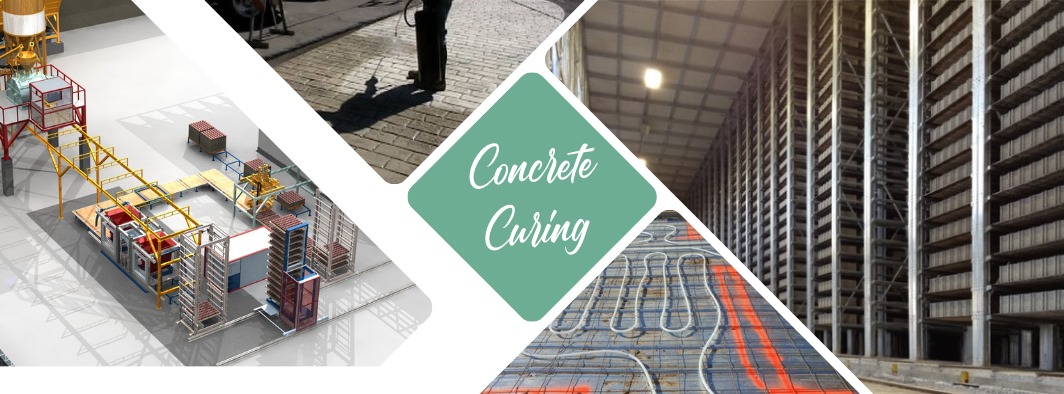Date :

What is Concrete Curing? Benefits and Techniques for Paving and Block Production
Concrete Curing Process and Correct Applications
After pouring concrete, it is essential to implement the curing process to allow the concrete to reach full strength and durability. Curing reduces water loss, enhances concrete quality, and prevents cracking. However, the length and method of curing can impact inventory and shipping times, especially for high-production facilities.
Standard Curing Duration and Recommendations for Manufacturers
Generally, curing time varies from 7 to 28 days for full strength. Although this duration is standard for concrete, it may not be feasible for high-volume production facilities. Therefore, some alternatives provide rapid production cycles:
1.Enclosed Space Curing: Limited storage often requires companies to store products in enclosed areas, allowing moisture retention and improved curing.
2.Accelerated Moisture Curing: After two to three days in an enclosed space, products are subjected to moist curing, speeding up the process and preparing them for earlier distribution.
3.Industrial Curing Compounds: Curing agents slow water loss, enabling concrete to gain durability quickly—a solution many high-volume producers find helpful.
Risks of Short Curing Periods
Rushing the curing process and shipping products in just two or three days poses durability risks. Moving concrete before it has reached adequate strength may lead to cracks or deformation, especially for products requiring high structural integrity.
Common Curing Mistakes and Proper Guidelines
To ensure durability, companies should avoid early shipping without adequate curing. Essential steps include:
1.Moist Curing for the First 24-48 Hours: Retain moisture and prevent cracking by storing products in a closed and humid environment during the initial days.
2.Adhering to a Minimum Curing Period: For optimal durability, products should ideally be cured for at least seven days.
3.Curing Rack System Use: Employing specialized curing racks may optimize space usage and allow for better curing in facilities with limited storage.
Conclusion and Recommendations for New Entrants
Curing is critical for concrete product quality. Shortened curing may lead to durability issues, potentially affecting customer satisfaction. Therefore, new entrants are advised to invest in curing racks or enclosed curing spaces to achieve minimum curing requirements.
At Conpromac, we create facility structures that best meet our customers' needs, enabling them to utilize their production capacities most efficiently. Concrete curing is a crucial step that directly affects quality during the production process. For more information or to optimize your facility for curing, please feel free to contact us.
